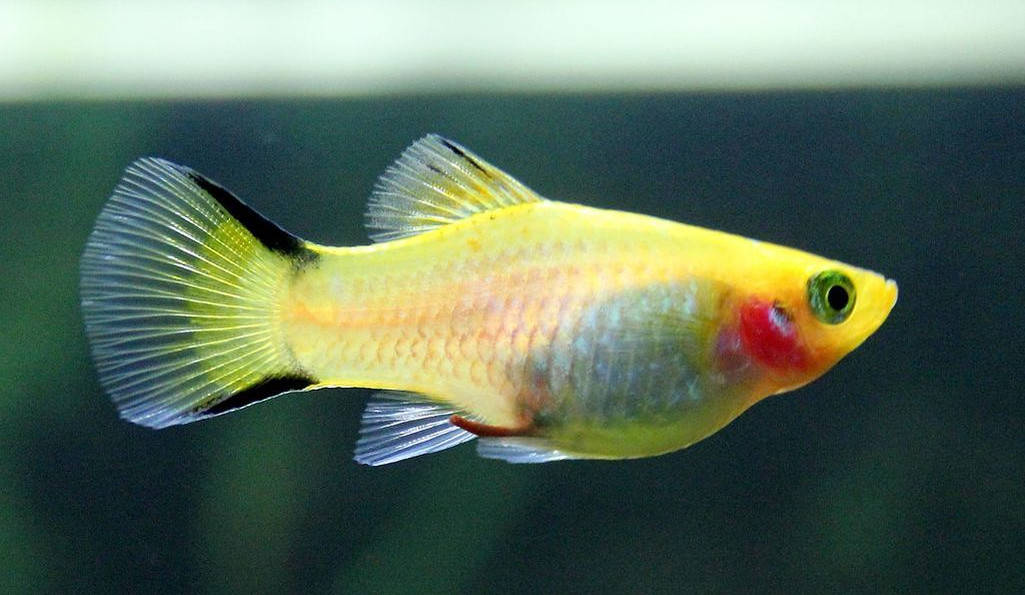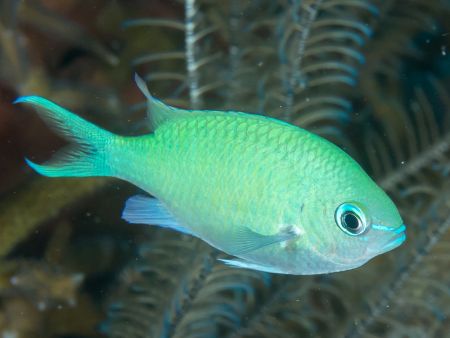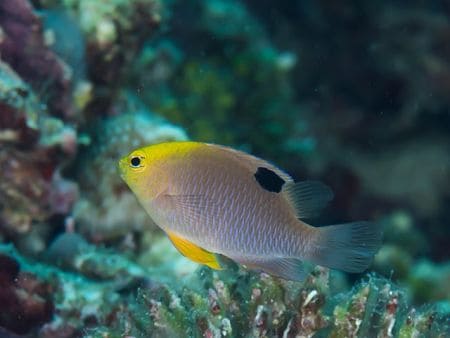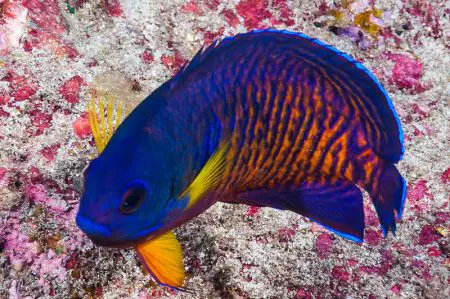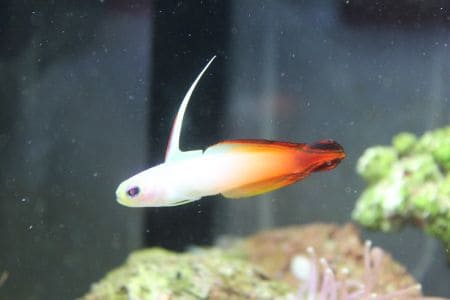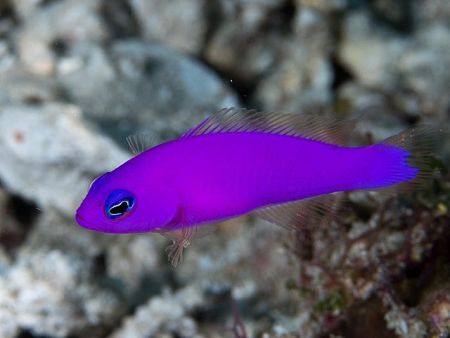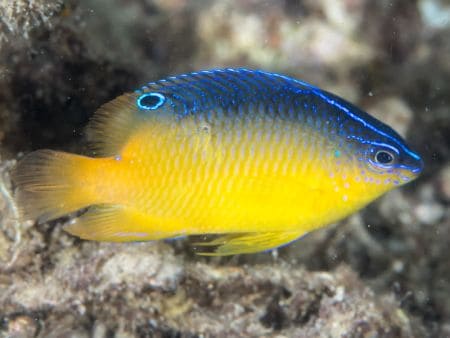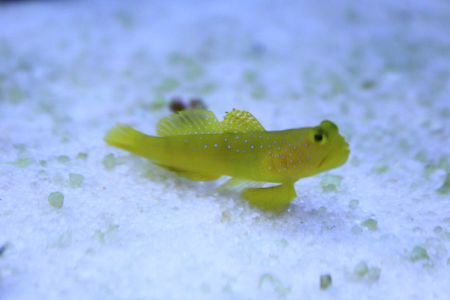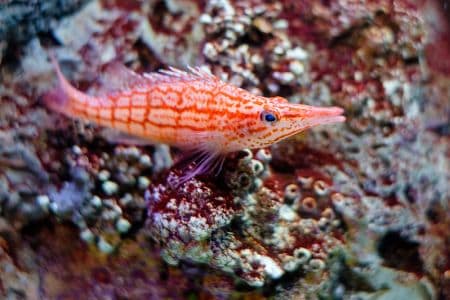The Ultimate Aquarium and Fish Tank Guide
When it comes to aquariums, there is plenty of information to dive into. Aquariums have been around for millenniums. As the technology for tanks have evolved, so have our knowledge of fish keeping and tanks.
In this article, we hope to bring some of this knowledge to light.
First, we will introduce you to a brief history of fish keeping and aquariums. In the process, you will learn how aquariums were first developed and the early practices of fishkeeping.
By looking at the history of aquariums we can see just how far fishkeeping has come. Especially in the last century where aquariums have advanced the most. More importantly, we can explore the mistakes our predecessors made and improve on our own care of home aquatic life.
After you are acquainted with the past, we will go into some of the benefits of aquariums. Some people don’t think it’s important for fish to have a proper tank, but they are wrong.
The design, the materials used, and other tank features are extremely vital to fishkeeping. We will go into great detail on these subjects. In addition, you will learn about the proper care of tanks. With most aquariums, you can’t just dump water and your fish in. Special steps need to be taken to get your tank prepared for your fish.
Freshwater, Saltwater, and Turtle Tanks
Lastly, towards the end of the article, we will talk about different types of tanks you can run. There are three variations of tanks most people use.
Freshwater tanks are by far the most popular. We will go into the uses of freshwater tanks. Introduce you to some freshwater fish, and talk about planting greenery in your tank.
Afterward, we will talk about saltwater tanks which are also very popular among aquarists. The ocean is full of a variety of fish that can go into saltwater aquariums. We will provide a list of stunning saltwater creatures to place in your tank. We will even teach you how to plant coral in your tank.
In the final section of the post, you will read about aquatic turtles and the tanks they should be placed in. We want you to get the most out of the aquarium you purchase. So we have compiled all this information for you in one convenient location.
Read on to find more about your future aquarium!
Table of Contents
The Early History Of Aquariums
Aquatic pets are not a new phenomenon. In fact, aquariums and fish keeping have a long and rich history worldwide. Prominent cultures are known to have kept fish in their homes to entertain themselves.
But the first signs of aquarium-like structures can be seen in Assyria and Sumeria more than six thousand years ago. These Fertal Cresent civilizations dug holes in the ground and built stone-like structures to enclose fish. Ocean water was put in with captured fish.
These were known as fish pens, and they were the world’s first known aquariums. Assyrians and other cultures knew which fish would survive in a pen and picked fish accordingly.
The next trace of fish keeping was seen in the ancient people of Rome, Egypt, and Greece. These well-known civilizations housed fish in their homes.
Some ancient people kept fish in their house to eat later. Others, like the Romans, kept fish as a form of entertainment. Sharks, large fish, and other aquatic animals were held in stone vessels.
In the famous Collesuem, these animals were made to fight each other for sport. Not all sea creatures were used for this purpose. Still, fish were usually kept for more practical or bloody purposes.
Fishkeeping was not extremely popular and just developing. At this point, marble aquariums were gaining traction but other primitive rock material was still used.
Goldfish Breeding in China
The most prominent contributions to fish keeping would be developed in China. This is where ornamental fish keeping and breeding truly began.
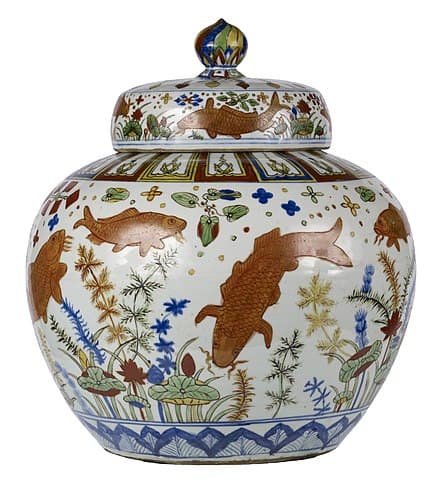
In the tenth century, the Chinese began breeding golden carp fish. Initially, the carp were bred in ponds as food. This quickly changed as breeders noticed mutations.
Different colored fish were born as fish mated. As a result of this, the Chinese started selectively breeding carps to get certain colored fish.
This breeding would eventually lead to modern goldfish. Fish breeding began as a relatively unknown practice but grew substantially after royal interest. In fact, these decorative fish were not bred for just anyone.
They were made for the emperor of China to admire. The emperor was the only one allowed to have goldfish with golden scales. Orange goldfish, or goldfish as we know them today, were kept as pets by lesser royalty or other wealthy individuals.
Asian Fishkeeping
During the Song Dynasty, the Emperor during this period bred a lot of these fish. Eventually, he started to give them away to the public as gifts. This gave everyone access to goldfish. This happened around the twelfth century.
By the sixteenth century, goldfish were common pets in China, as well as, Korea. Other Asian countries like Japan began their own fish breeding. Japan would be home to the first koi fish in the world. Getting back to aquariums, stone structures, and ponds were still used. But porcelain bowls for fish were also introduced by this time.
Asian fishkeeping was the first fishkeeping to resembles modern aquarium use. While other civilizations kept fish, it wasn’t always for decorative or pet-friendly reasons. In China, the first true aquatic pets and aquarium use are seen way before any other country.
The Start of Modern Aquarium Use
China was able to advance fishkeeping and aquarium use substantially. But glass Aquariums as we know them would be created in Europe. The advent of this technology began in Portugal.
The Portuguese started importing goldfish from China in the late seventeenth century. From this point on, other European countries started to take an interest in fishkeeping.
Before this, some fish were kept in public ponds and man-made lakes. But this was done mostly for practical purposes. Townspeople would use these spaces to fish or gather food for the market.
This changed when goldfish were brought over from Asia. The importation of newly bred exotic fish set Europe down the path of fish breeding and aquarium use.
Goldfish Breeding in Holland
Holland took part in this first. The people of Holland were known to have bred goldfish for fun. They created a multitude of variations and colors of goldfish. Fish, like other luxury items, were used to boost Holland’s economy.
As more interest in fishkeeping developed, new innovations in aquariums were seen. While the Chinese had made strides in fish cultivation, they hadn’t improved upon aquariums much. Europe was the first to change this.
The upper class in Holland, and other countries, started putting their fish in small glass bowls and large fountains. Fish lived a little longer in these dwellings. But the care of aquatic pets was still largely unknown at the time. This kept fishkeeping restricted to the wealthy.
The cost alone was one factor that kept aquarium use limited. But the lifespan of a fish also created this effect. Fish died easily and needed to be replaced often. As you can imagine, at this time, it was expensive to get new fish.
Glass bowls didn’t improve a fish’s survival rate by much, but fountains did help. They created an oxygen flow, even if people didn’t realize it. And while glass tanks were made during this period, they wouldn’t take off till the nineteenth century in France.
Jeanne Power

A French Marine Biologist named Jeanne Power was the first to popularize the long term use of glass aquariums.
She is known as the mother of aquariums. With her glass tanks, her intentions were to house aquatic creatures to study and research. She was the first person to do this with fish and other sea creatures.
Jeanne was ahead of her time. In her letters, she often talked about bringing the ocean into her home. She did this by creating naturalistic environments in her tanks. She put coral, rocks, and other sea plants in to study her fish fully. She also wrote extensively on her findings in her aquariums.
She tried to uncover the best ways to keep organisms alive. But it took a long time for scientists to figure out how to keep fish alive in aquariums. They knew that air and water movement were a part of this equation. But they didn’t know specifically what fish needed to survive in tanks longer.
From Vivariums to Aquariums
It wouldn’t be till the end of the eighteen hundreds that this was figured out. Still, even before this discovery, aquariums were useful for scientists who brought specimens over from other countries. As the rest of the century wore on, other marine biologists began using glass containers to study their fish.
By the middle of the century, glass aquariums started their spread to England. This spread happened primarily in the scientific community. And aquariums weren’t called aquariums at the time, but they looked similar to current models.
They were called Vivariums.
Aquarium use wasn’t widespread by any means at this point, but they were primed to develop fully. The printing press could spread more information about fish keeping.
And with the invention of the railroad, aquariums and fish were finally able to make their way across Europe. Steamships also spread fish further across the globe as they crossed the oceans
The First Modern Aquariums in Public
At the same time that aquariums were starting to advance, the British Empire was at the height of colonialism. More areas were being conquered by the empire. And the more lands they took over, the more wealth and power they amassed.
The British wanted to show off their exotic and luxurious finds from the counties they took over. They wanted to display their dominance over their world so to speak. In short, this influx of wealth created an avenue for the ultra-rich to show off. Naturally, fish also fell into this category. Naturalists were experimenting and exploring new continents for scientific advancement. But parallel to this was upper-class desires.
Rich people got bored, and they wanted a fun new hobby. As a result of all these factors, the English public would be the first to enjoy modern aquariums. Pet fish would eventually become the norm in homes. And plenty of exquisite and wacky tank designs would be invented.
The Begin of Home Aquariums for Everyone
The fish boom really took off after a large aquarium was showcased in England. Naturalist Phillip Gosse designed a massive tank for a public showing. Gosse, as well as, other aquarists of the time started a new trend. To allow fish a long term habitat they suggested replicating the water conditions of the fish’s natural habitat.
This idea led to the state of the art installation that inspired many to keep their own aquariums. This approach wasn’t successful at the start. But as more and more discoveries were made about fish, more fish were able to be put in tanks.
Eventually, fish were able to be put in museums for display. The British were also the first to do this, but it quickly spreads to other European countries. Aquarium displays allowed citizens of the empire to see the fruits of their armies conquests.
The Royal Aquarium in England was created in 1876 to meet this aim. Often, these tanks were ornately designed, sometimes with gold. In addition, fish tanks and other displays at the museums and zoos gave people a place to socialize and learn. The middle class had began to rise during the industrial revolution. With access to aquatic displays, their sights would also begin to set on home aquariums.
The Twentieth Century and Beyond
During the twentieth century, cultures in every corner of the globe began to interact with one another. Unfortunately, a lot of this interaction came from colonialism and imperialism. For good or for bad, this merging of the world would lead to further globalization of society.
And with these advancements came the spread of fish keeping culture. With that spread came new fish breeds and species being introduced around the world.
Many new fish came from the African continent, but species from Asia also became more popular early on in this period. The variety of fish available made fish keeping more popular. Containers made of many materials could be used to ship fish overseas. And plastic containers would become available during the mid-twentieth century. Which made shipment even easier.
Overall, during this new century aquariums were not uncommon. Pet shops also began to crop up during this time. It wasn’t rare to find a fish in a bowl when you were shopping for a pet.
The First Air Pump for Aquarium
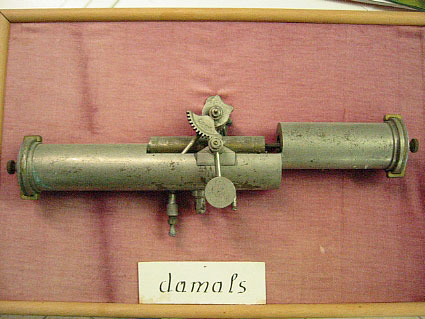
1908 was a particularly important year for aquariums. This was when the first air pump for tanks was created.
Before this, scientists knew that fish needed a proper environment to thrive. They just weren’t sure how to give fish the oxygenation they needed.
The air pump solved these problems. It also made life better for fish in tanks. By the time WW1 hit, aquariums became more popular than ever. This was because of the widespread availability of electricity. Aquariums could finally be fitted with some important features. Lights could be installed, filtration could be added, and heating and oxygenation became possible.
By the end of WW2, the world has opened even further. People of all nationalities had fought together, traveled together, and discovered more of the world together. People wanted to bring back some of what they saw. With the invention of the aircraft, the sharing of fish species reached a fever pitch.
Then, with radio and tv coming into the world, fishkeeping was further popularized. It wasn’t just a niche hobby for the rich, but something that could be advertised. Fish products were run on tv ads for the first time during the mid-1900’s. Fish flakes, gravel, and other fish necessities also became available to the wider public. Today, millions of people own fish around the world.
Benefits of Aquariums
Aquariums, especially modern aquariums, have innumerable benefits for pet owners and fish. Glass bowls and other small containers may seem like a more convenient choice. In truth, these vessels are too tiny for your fish. The worst part is that they can cause health issues.
Fishkeeping has come a long way since its inception. Throughout the years, many aquarium benefits have been discovered.
Why not reap some of those benefits?
In the long run, an aquarium is a better choice for your fish and you.
One of the biggest benefits of new aquariums is the shape and size. The box-like design of tanks allows for ideal oxygen exchange in your tank. And the bigger mass of tanks gives fish ample room to swim. In glass bowls and other small round containers, oxygen has less room to expand and spread. Fish are not able to breathe well in these conditions.
Small containers can not only suffocate your fish. They prevent your fish from getting the care they need. You can’t put all the necessary devices your fish needs in bowls. With a proper tank, you won’t experience these problems.
The extra space in an aquarium allows for more space and more advanced fishkeeping. Aquariums often come equipped with state of the art features. These needed devices will make life for you and your fish easier.
The Aquarium, a Place for Plants
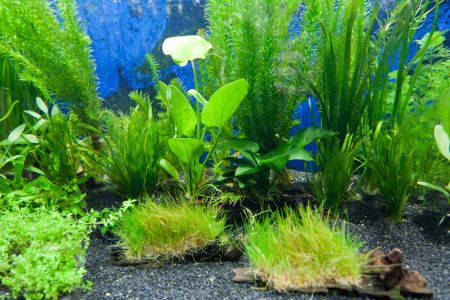
Most aquariums are equipped with LED lights. This is great for your fish’s health and your health. Aquariums are known to provide destressing effects. They can also decrease levels of anxiety. When your fish is lit up in an aquarium you can relax with your fish. Fish owners can further add to this peaceful environment with the addition of plant life.
Aquariums, unlike other vessels, give you the option to have aquatic plants. With room for a light and other needed plant materials, you can grow a whole range of beautiful plants in a tank.
Plants are something to consider buying for an aquarium. They add depth to tanks visually and also create a better environment for fish. Water is filtered and oxygenated by plants. Plants alone aren’t enough to keep your tank fully clean, but they definitely help your tank. A filter should be placed in most aquariums.
Fish Tank Filter
The good thing about modern fish tanks is that they usually have a filter already installed within the structure.
A filter is the ultimate way to keep your fish disease-free and alive for years. Filters get rid of nasty chemicals, and other toxins typically found in aquariums. In addition, the size of a tank creates less build-up of waste and other materials. In smaller containers, you don’t have either of these luxuries. Filth builds up fast and filters cannot be installed. Instead, you have to clean the water more frequently which can lead to more cleaning and maintenance.
Aquariums circumvent these issues. If there isn’t a filter in your tank already, aquariums have plenty of room to add one in on your own. Your tank stays much cleaner in a full-sized aquarium. Along with filters, an aquarium will also let you regulate the temperature of your fish water.
Again, this is not possible with other fish containers. Tanks can be affixed with heating devices. The lids on tanks make it the perfect place to hang these devices. If you want, you can also submerge some heaters.
Great for You and Your Fish
In the past, aquariums were more simple. In this modern age, no one wants to stick with old technology. Aquariums are great for your fish’s health, and they will make fishkeeping less complicated. Aquariums are endowed with many modern conveniences.
Alternatively, you can put in your own devices and added features to any tank. The possibilities with aquariums are near endless. And the benefits will leave you with a happier fish. You can create a peaceful and natural habitat for any fish with an aquarium! Aquariums can also be a place of self-expression.
When you decorate your tank you create a space for your pet and yourself. This is great for your mental and emotional health!
Development and Designs of Aquariums
No one aquarium is built the same way. Each tank is constructed with a unique design and aim in mind. Not all aquariums look great, but they are built with intent. Over the years, aquariums have been built in many ways.
As we mentioned previously, the first aquariums were designed for short term use. These “aquariums” were open and made of stone. They were crudely assembled but effective. Usually, ocean water was placed in with the fish. The purpose of these structures was to keep fish alive for selling or eating. The same level of care was not put into these structures as current models.
The First Glass Fish Tanks
On the other hand, aquariums in the far east were smaller but made with more thought. They kept fish housed for a longer time. The Chinese used porcelain and other delicate materials to keep fish in their homes. Not till the 1600s was glass used though.
We see the first signs of glass-like structures in Holland. These were simply designed bowls meant to keep smaller fish. Ceramic materials were used, as well as, jars and other small household objects. But glass designs had become more popular during this period.

As you now know, France designed the first glass tanks made for long term use.
This was almost a hundred after Holland introduced fish bowls. French and other European naturalists wanted tanks to be transparent for optimal fish viewing. From this point on the design of aquariums would become more complex.
Large tanks were designed for public display. They were outfitted with all kinds of decorations. In homes, small custom tanks were designed by the rich. Some had different compartments for plants and other sea critters. Others created whimsical aquariums. While some tanks remained rounded, most kept to cube-like and rectangular designs, This helped keep the glass together and stabilized.
What changed in design mostly was the size and frame. During the Victorian period, metal frames and steel bottoms for tanks were made. Metal kept the glass together and prevented cracking. The steel bottom of a tank helped heat up tanks that needed warmer water. People in this period would put fish tanks over an open flame to keep the water warm.
Silicone and Acrylic
Glass today is a go-to material for aquariums. It can’t be as easily manipulated as other mediums, but it serves a practical purpose. It is robust, allows you to see your fish fully, and isn’t as likely to scratch. In the past, glass was sealed with metal and a putty-like substance.
Starting in the last century, glass tanks began to be sealed by silicone. This type of sealant can be used without a frame or attached with plastic frames. This creates the best and most cost-effective results for tanks. The old metal frames were too heavy. With plastic and silicone glass aquariums are easier to maintain. In the seventies, acrylic tanks were finally introduced.
Glass is still extremely popular, but acrylic has the advantage of being lightweight. This makes it preferable to some fish owners. In a later section, we will go over the advantages and disadvantages of glass and acrylic tanks.
Overall, the shape and size of a tank are key to a tank’s longevity. Depending on design and form, the space the aquarium is placed in will be impacted. A fish itself will also be impacted by the design of a tank. Consider this when buying a tank.
Some tanks are longer horizontally and might suit a school of smaller fish. They might also give you more space in your house. Other tanks are shorter and mimic aquatic habitats.
Ultimately, you want to have enough room for your tank, and you want a shape and design that suits your fish.
Size Options for Aquariums
Aquariums don’t just offer fish owners a variety of shapes and designs. When you go out and buy an aquarium, you will find several sizes to choose from. This can be confusing at first, as tanks range widely in size.
There are options from one-gallon nano tanks to massive aquariums used in public aquatic zoos. Most people are not going to get hulking tanks. Pet owners tend to stick with small to medium-sized tanks.
Primarily, the size you choose will depend on your fish. Aquatic pets need to be in certain environments though. So do some research beforehand so you know you are making the right choice.
At your local pet store, or online, there are generally three sizes to choose from. You can get nano tanks, medium-sized tanks, and large tanks. Nano tanks are under 20 gallons and are popular for smaller fish.
Medium tanks are between twenty and fifty gallons. These are great for an array of fish.
Large tanks include anything larger than fifty gallons. You can use large tanks if you plan on buying saltwater fish, or if you just plan on having a lot of fish.
The Difference Between Nano Tanks and Larger Tanks
If you can help it, you don’t want to go with smaller tanks. New fish owners think that smaller tanks are easier to maintain, but this isn’t true. Usually, it is better to start out with a larger tank. The biggest benefit is easier maintenance.
Larger tanks will accumulate dirt and waste slower, so you won’t have to clean out the water as much. Smaller tanks, on the other hand, will get dirty fast. If you don’t regularly clean out a small tank this could be disastrous. This leads to another benefit of larger tanks.
Size Matters
With large and even medium tanks your fish will experience better overall health. Your fish will swim cleaner water, which is better oxygenated in a large tank. Most importantly, they will have more room to roam and swim in. Space for your fish is the key to a fish’s development and well-being.
If you want your fish to be happy get a bigger tank. In the end, this will save your pet from health problems. Even better, this investment will save you from extra cleanings. Again, between any of these sized tanks, there are a lot of aquariums to choose from.
No matter the tank you decide to purchase, you need to keep your fish in mind. Your fish’s health is a crucial component in any tank purchase. You want to make sure that your fish has enough room to explore. More than that you want to give your fish room to grow.
Small tanks can stunt the growth of your fish if you aren’t careful. Keeping this in mind, there are certain size standards your tank should meet.
What Size Fish Tank to Get
Video: “How to Choose an Aquarium”
Most fish experts recommend getting a ten-gallon tank at a minimum. This size will fit with almost any type of fish. Still, you should conduct your own research. Some fish might need even more space. Other fish can get away with less space.
For instance, Guppies and other very tiny fish can stay in smaller tanks. These fish are usually the exception to the rule. Everything is contingent on the specific fish in your tank.
But generally, you want ten-gallons for your fish. Sometimes money can be tight and pet owners can’t get a bigger tank. If you have to get a smaller aquarium don’t go below five gallons. Even with small fish, this is not recommended.
Not only can bacteria and toxins grow rapidly in a smaller tank. In time your fish could suffocate in this cramped space. If you are getting more than one fish, this is especially true. You don’t want your fish to be squished together. All the oxygen could be depleted with many fish. Really, each fish should have ten gallons to themselves.
Lastly, if you are buying saltwater fish, you definitely can’t settle for a smaller tank. While some freshwater fish can survive in a smaller space, saltwater fish are not as likely to survive. Saltwater fish have very specific tank requirements and will die if they are not met.
The Right Fish Tank for Your Home
Something else to consider when you are choosing the size of your tank is your home. Not only do you want to get the right tank for your fish. You want to get the right tank for your home.
Some houses can hold larger tanks, other tanks might be better off with a medium-sized or nano tank. If you don’t have enough room in your house you might have to go with a small tank.
If you want the right size tank though, you can get a design that is longer horizontally. Your fish can still swim freely and you won’t take up much room this way.
Generally speaking, ten-gallon tanks are good for apartments, dorms, and offices, and small houses. In bigger dwellings, you can fit much larger tanks. If you are worried about the weight of your tank and moving it, try getting an acrylic tank.
Acrylic vs. Glass Aquariums
Acrylic and Glass Aquariums are by far the most popular materials used in aquariums. In some sense, these two types of tanks can be considered rivals. The choice between these products can be a difficult one. Both materials are sturdy and allow you to see your fish clearly.
However, there are some key differences between the two. We will be going over some of their distinctions so you better understand each type of tank.
Both have advantages and disadvantages. The decision you make will largely rely on preference. Typically though, we recommend going with glass.
Video: “Acrylic Vs. Low Iron Glass Vs. Regular Glass Aquarium”
Advantages of Glass Aquariums
Glass aquariums are simply designed and manufactured. If you are looking for a basic tank made of non-toxic materials, this is a sound and safe choice. Acrylic is also non-toxic for fish, but it has to be made right. Likely, you won’t have any issues with either material though.
When using a glass aquarium, there are many advantages. One of the biggest benefits is the durable nature of glass. Glass won’t scratch easily. It won’t crack under the pressure of water. In fact, it can take on a lot of force before it breaks down. Glass can hold a lot of weight, and is a good material for bigger gallon tanks.
Overall, this material is known to stay in good quality for years. And you won’t have to break the bank for this level of quality. Glass is cheap and offers fish owners a cost-effective aquarium option.
With glass tanks, you can buy products with a frame or without a frame. Choose the aesthetic that best matches you. Either way, the silicone sealant will keep your glass from leaking. Sealed together, glass panes can easily support themselves.
Disadvantages of Glass Aquariums
While glass has many advantages, it is not without its negative points. Fish owners complain about the weight of glass tanks the most. Sometimes, it can be complicated lifting your tank and moving it around a house. This may be less of a problem for smaller tanks though.
Another issue with glass tanks is purely cosmetic, but relevant. Glass tanks tend to stick to a box-like design. The material can’t be crafted and shaped as well as other types of tanks. If you are looking for a unique tank design, glass probably isn’t the choice for you.
Also, in relation to visuals, if you want a tank that is crystal clear glass might not be ideal. This potential issue comes from the thickness of glass. Depending on the size of the tank, the glass may be thicker. While this makes you tank strong, it can impair the viewing experience of an aquarium.
Light refracts easily on glass. This causes colors and images to become a little distorted. You’ll be able to see your fish just fine, and the difference isn’t huge. But if you are particular about these sort of things acrylic tanks might be a better option. Especially if you have a massive tank.
Advantages of Acrylic Aquariums
Acrylic tanks will cost you more, but they have a few benefits not found in glass tanks. One of the first features that sets acrylic apart from glass is its insulation. Acrylic will keep your tank at a constant temperature more easily. This puts less strain on your tank heater. Also putting less strain on you is the weight of acrylic tanks.
Acrylic is lightweight and flexible. You won’t have any issues moving your tank, unlike glass. Another thing that sets acrylic and glass apart is design. You can get a tank that doesn’t look like your typical aquarium. This is only possible with acrylic. The medium is easy to shape and can be crafted into any number of designs. This will all cost you more money, but these features are important to some tank owners.
In addition, with these kinds of tanks, you will find that they are less affected by light refraction. Because of this, you will be able to see your fish with less distortion and more sharpness. If you want a stunningly designed tank with picture-perfect clarity try these tanks out. Still, while acrylic looks great it has some downsides as well.
Disadvantages of Acrylic Aquariums
With acrylic aquariums, you are trading in longevity for looks. Acrylic tanks might be more expensive, but this doesn’t mean they will last longer than glass tanks.
One of the main problems with acrylic is that it can accumulate scratches a lot more easily. If your fish has sharp appendages this could scratch up your tank. And when you clean up your tank you will need to be mindful to prevent any damage.
Adding to this issue, the acrylic turns yellows and fades over time. While your tank will look clear at first, after a few years it could look murkier than glass tanks. With glass, you don’t have this problem. The clarity on glass tanks will stay the same even years later. Strength in both glass and acrylic is comparable. Acrylic is slightly stronger but requires more support materials to keep it from coming apart.
On the whole, acrylic tanks are sturdy and nice to look at. But if you think any of the issues mentioned will be a problem a glass tank might suit you more.
Think about the pros and cons of each material before you purchase anything. Either type of tank will work well for fish. But depending on your budget and your needs one material might be better for you. If you want a fun lightweight tank get an acrylic tank.
If you want something that will cost you less and last longer, glass might be better for you.
Maintaining Your Fish Tank
All fish aquariums require routine care to maintain the proper water conditions for their tank. However, not all fish can be tended to in the same manner.
As fish keeping has advanced more and more, we now realize that each fish has different water requirements. And saltwater and freshwater tanks each have their own separate needs.
Still, there are fundamental procedures that all fish owners should consider before they purchase an aquarium. Fish, like any other pet, need a healthy environment to thrive.
In this next section, we will discuss the kind of care necessary to keep your aquarium water up to standard.
Later on, we will also go into more specialized fish care for freshwater and saltwater fish.
Get your Aquarium Ready for Fish
As we mentioned before, in the past, fish died easily due to improper water conditions and a lack of knowledge. Luckily, over the past few decades, fishkeeping has moved forward in leaps.
We now know how to keep fish alive in man-made environments for longer periods of time. In the process, tanks have become better equipped to handle all kinds of aquatic pets.
Still, while tanks and fish care have pushed on, not all tank owners have taken advantage of this progress.
Some fish owners don’t realize one simple fact. It takes more than water and a good-sized tank to keep your fish alive and prospering. Aquarium water calls for certain preparations and tools to make it just right for your new fish.
One of the first and most basic things to consider is the cleanliness of your tank. No matter what tank you get, it will need to be cleaned. Any aquarium you get should be wiped down and made free of dust before you put water in it. You don’t want your tank to get contaminated. So this is an important step that can’t be missed.
Also, if you put tap water in your tank, make sure to neutralize the water. Water conditioner for aquarium is cheap and easy to use. It will make your water ready for your fish. It gets rid of chlorine and other toxins that might be in the water. All you need is a few drops!
Water Conditions of Aquariums And Decreasing the Bioload
After you know that your tank is free of dust and contaminants you can move on to the next step. You’ll need a way to keep your water fresh and filtered for your fish.
Filtration in an aquarium is paramount. In unfiltered water, fish are more likely to become sick and even diseased. This is because your pet won’t be able to leave unclean water. The longer they stay in these conditions, the more their health will decline.
In the worst possible scenario, your fish could die. If you want to prevent this, a number of methods can be employed to keep your tank clean. Changing your water frequently is one method.
But there are easier ways to get this job done and get your fish in the right water conditions.
The Best Way to Keep Your Fish Tank Clean
Aquarium filters are the best way to keep your aquarium in ideal shape. As you might have realized, your fish releases waste and other substances when it lives in a tank. Excrement, wasting food, and ammonia from your fishes gills can all build up.
In an aquarium, this creates what is known as a biological load. This is essentially the waste content in an aquarium. Unlike humans though, a fish can’t clean up after itself. This is why a filter is necessary. With this technology, the build-up of these toxic substances can be halted. And the biological load can be decreased greatly as a result.
Filters come in all sorts of sizes and types. The capabilities of these devices depend on the brand you purchase. High-quality filter systems can keep waste and toxin levels down with ease. Some of them even contain good bacteria that will fight off grime and nitrites in a tank.
Filters are a necessary purchase for any tank. They bring many needed benefits and even help keep your water oxygenated.
But realize that they can’t keep your tank water in perfect condition alone. Along with being filtered, each tank needs to be cycled properly.
Nitrogen Cycle
Every tank should be put through the Nitrogen cycle. This cycle helps grow beneficial bacteria in your tank water. The bacteria will also settle into your filter to keep your water extra clean. As you know, ammonia and other toxic chemicals can grow and spread in your tank water. The growth of this waste can kill your fish.
By implementing the nitrogen cycle, you prevent your fish from living in an uninhabitable environment. The importance of this process is in how it converts toxins into nontoxic nitrates. Ammonia and other waste products turn into nitrate to prevent your fish from being harmed.
Your water is effectively neutralized through this cycle. Nitrates in small levels will not harm your fish. But you do want to keep the level of nitrate down. Nitrates while non-toxic can cause algae to grow in the water. This will cause water quality to go down.
To prevent this just make sure to change your water every once in a while.
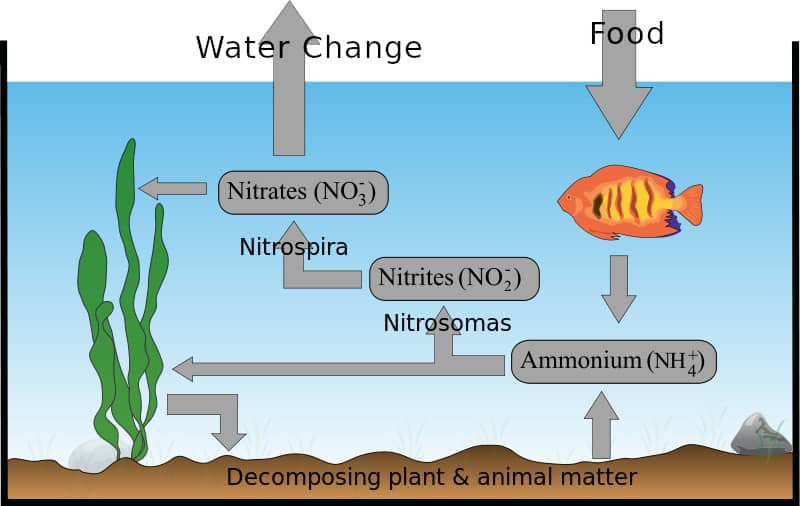
Prepare Ahead
So you’re probably wondering, how you can cycle your tank. Cycling a tank is not hard, but it does take time. Ideally, you want to do this without your fish in the tank. Cycling a tank with a fish can be stressful and even harmful to your fish’s livelihood. Consider this before you go out and buy a fish.
You’ll want to prepare ahead of time and have the tank ready before you put your pet in. This can take anywhere between two weeks to a month to complete. Sometimes it can even take two months to cycle an aquarium. Still, this needs to be done for your fish to have the best possible aquatic tank.
The first step in this cycle is to introduce the tank to ammonia. You will accomplish this by putting uneaten fish food into an aquarium. Do this once or twice a day, just put a little in. The food will decay and your tank will get a little hazy.
This is perfectly normal, this means your tank is going to the next phase of the cycle. If your tank isn’t getting cloudy enough check the ammonia levels with a starter kit. The ammonia should measure out to three parts per million. If it isn’t meeting this requirement, just put some more food in and let it create higher levels of ammonia.
This step lasts for up to a week. The ammonia levels should be maintained. So test your water for ammonia levels around every other day. Nitrites will eventually be produced in the water.
Nitrogen Cycle Finish
Once your kit confirms the presence of the nitrates you are ready for the next step. Keep putting in ammonia with the fish food. At some point, the nitrites will level out in your aquarium. This could take a while, so make sure to be patient. When the nitrite and ammonia goes down to zero, this means the bacteria has properly grown in your tank.
You should be able to detect nitrate in your tank now. If this is the case, the nitrogen cycle is almost complete at this point. If you still aren’t getting a reading of zero don’t worry. You might just have to do a few water changes. Don’t get rid of all the water, just around half. You just want to change the water enough to reduce the nitrites and ammonia all the way.
Before you add your fish into the water make sure the nitrate is not above a reading of forty. Change some of the water if this happens. When nitrate is at the right level, and there are no nitrites and ammonia you can put your fish in.
Methods to Accelerate the Nitrogen Cycle
Some people find this process daunting. But if you follow these instructions you can easily prep your tank before your fish enters. In fact, there are even some methods to accelerate the nitrogen cycle.
If you have a tank already, or know someone with a tank, you can use old filter media. These tanks have already gone through the cycle. This way the bacteria is already developed.
All you have to do is put a filter from another tank in. If you are worried about putting in a filter from another tank try using gravel from another tank. The gravel from a tank that has gone through the cycle will give you the same quick results as a filter. You don’t need a ton of gravel, just scoop around a handful into a bag.
After, just pour the gravel in with your newer gravel. The bacteria will grow in your tank and the cycle will happen a lot faster. You can also put a new filter into an already existing tank.
Advantage of Aquarium Plants
All of these methods will hasten the process, but be wary. You can only do this with a clean tank. You don’t want to contaminate your fish’s tank before it is even put in the water. Make sure you are certain that the tank you are borrowing bacteria from is uncontaminated.
One way to prevent this is by using tank plants. Tank plants help cultivate good bacteria in the water a little faster. This will only work with live plants though. Plants clean out tanks, add bacteria, and keep the condition of the water at a higher quality. Consider this if you want to avoid contamination. But be aware that plants will take some extra research to care for.
People new to aquariums and aquarium care might want a less complicated cycling process. But if you want to try using a plant for this process, there is no harm in trying. Some plants can be used by beginners.
On the whole, though, cycling does take time, even with these tips. So be patient and let the process happen at its own pace.
Getting PH Right in Your Fish Tank

So you’ve cycled your tank and got rid of any toxic build-up. The next thing to consider is your aquarium’s Ph level. This also affects your water conditions.
The Ph of your tank will largely depend on your fish. Different fish need a specific range of Ph. Normally though, freshwater fish like a range between six-point eight and seven-point eight. Again conduct some research on your specific fish to get the right water conditions.
If you have a saltwater tank, your fish will have a higher Ph level. Ocean fish like waters that are between seven-point eight and eight-point four. Again, this will depend on the fish, but this gives you a general range to work with.
Lowering the Ph Level
Check Ph levels before you let your fish into the tank. It has to be at the right range for your fish to be comfortable and healthy. If the water isn’t at the correct Ph, there are some measures you can take.
One of the easiest methods to lower the Ph is by buying products that reduce the hardness of the water. Some gravels contain materials that will reduce Ph levels in tanks. Alternatively, a water change and the addition of water treatment could also help with this.
If you want a more natural solution try putting moss or other plants in the water. Driftwood is also known to help reduce the Ph level. Really, if you keep your water clean you shouldn’t encounter this issue.
Raising the Ph Level
If you need to up your Ph level then you will need to do other things to your water. Baking soda is often used to up Ph. But you want to do this carefully. If you add too much in you risk making big changes to your tank’s chemistry. This can be dangerous for your fish.
To be safe, only add one teaspoon of baking soda at a time. This amount will work for five gallons. So use this ratio to figure out what amount of baking soda is right for your tank. Once you figure this out, add in the correct amount and do this until your Ph raises.
Always check the level of your Ph as you do this. You don’t want to overdo it. If you don’t want to use baking soda, you can use crushed up coral to increase the Ph of your tank. This is a natural and easy way to adjust your tank. Again just keep track of your tank water condition to make sure that the change is happening slowly.
You want to check the Ph of your tank every once in a while. This will ensure the long term health of your fish. Any drastic changes in Ph could cause stress in your pet. With enough of a change in the levels, your fish could even die.
The Temperature of Your Fish Tank
Video: “Aquarium Heaters and Temperature”
Temperature is another important component of your aquarium maintenance. The climate of your tank water affects your fish’s well being and longevity. What specific temperature is required will depend on the fish you buy.
The first thing to know is what water your fish is suited to. Some fish enjoy tropical or warmer climates. Other fish do better in colder waters. Some fish might be able to survive in both climates. Though this is usually only true of freshwater fish. They tend to be hardier than ocean fish who are used to constant climates and water conditions.
Whatever temperature your fish needs, you need to make your water match these conditions. Fish in the wrong temperature water can encounter many health problems.
Fish Tank Thermometer
To prevent this, you can monitor your tank temperature by getting a tank thermometer. We highly recommend making this purchase for your aquarium.
With a thermometer, you can safely change the temperature of your tank without causing your pet any issues. Next, you’ll want to get a tank heater or lights. These can warm up your tank.
If you are willing to spend the money, some devices (aquarium chiller) can even decrease the temperature in a tank. Whatever adjustments you make to the water, make sure they are done slowly. Like with the Ph level, your fish need to be gradually acclimatized to new climate conditions.
To get the best results, buy a heater with an adjustable setting and a temperature monitor. The temperature readings aren’t precise. But they help put your tank in the right climate range. Use your thermometer with this device to make sure the water conditions are ideal.
Fish Tank Placement
In addition, you’ll want to consider the placement of your tank. Where you put your tank is important. Certain areas of your home are acceptable for your fish. Other places will not be so great. The goal is to keep the tank temperature constant.
First off, you do not want to place your tank near direct sunlight. The sun might heat up your tank too much. It could also change the temperature when you don’t want it too.
For similar reasons, you won’t want your tank to be under an air conditioner. This could cause you tank water to fluctuate to lower levels. Just be mindful of your tank positioning to keep the water conditions consistent. A shaded area with some light is best for your pet.
Remember that external temperature sources can influence the temperature of your aquarium water. So check the thermometer periodically. This way you can make sure that the settings are ideal for your fish.
Different Fish, Different Temperature
If you are still wondering what kinds of temperature your fish needs to be in, we can give you a few general ranges. Specific kinds of fish require a certain range that is healthy for that fish type.
For instance, fish from tropical regions ranges typically thrive in waters between seventy-two degrees Fahrenheit and eighty degrees Fahrenheit. The best average temperature for tropical fish is at seventy-eight degrees. If you get another fish, like a goldfish, they like temperatures of sixty-five to seventy-two degrees Fahrenheit.
Overall, temperature requirements will vary, but you can find the specific range with a little research.
Lighting Your Aquarium
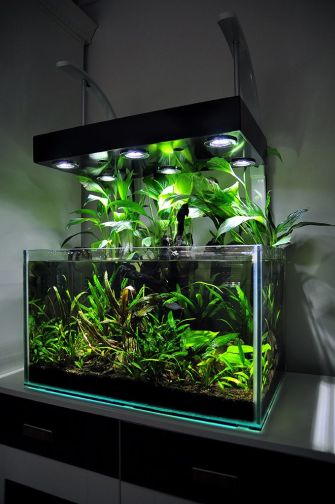
Aquariums should have a proper lighting system. Not only will this device make your tank pop, but lights will also help your fish flourish in its environment.
Lights play a crucial role in all aquariums. They help recreate the natural environment of the aquatic pets they house. Fish have different levels of light exposure in their own environments.
And LED lights and other bulbs can reproduce the effects of the sun. When you pick out a product, just be mindful of the fish you have. Each fish will need a specific amount of light when you set up your tank.
You’ll need to consider the type of fish you have so you can create the best habitat.
Light has another important function for your fish. These devices aid in creating a schedule for your fish. Lights do this by replicating both day and night time light in a tank. Different modes on these devices change the intensity of illumination and produce distinct effects. Some lights even have multicolored effects that look stunning in the water.
A key benefit of having a light your fish will know when to wake up. Your fish will also know when it is time to sleep. This regular wake and sleep routine will keep your fish in top condition.
Moreover, if you have a planted tank lights are even more crucial to your aquarium set up. Plants can’t go without light in an aquarium. Without this device, they will die.
Lighting Timer
To increase the benefits of lights, we recommend getting a device with a few different features. Above all else, aquarium lights should be adjustable. You want to be able to tailor the light to your fish.
A light timer is also something else to consider. You shouldn’t have to worry about powering your light on and off. A timer will take care of this so you won’t have to switch the lights on and off yourself. The device will also dim them at the same time every day for you.
Lastly, a product with different light modes will be useful. Multiple lighting options better reproduce light found in nature. They also create a nice aesthetic in an aquarium. Lights are known to be therapeutic to both humans and pet fish!
Is a Freshwater Aquarium Right For You
Freshwater aquariums house freshwater fish and other freshwater creatures. As you can imagine, these tanks contain water that does not come from the ocean. Instead, they hold freshwater in either glass or acrylic walls.
The water in freshwater tanks has different needs than saltwater tanks. On the whole, though, they are considered less demanding than saltwater tanks. This is because the conditions of freshwater can be kept much more flexible. With saltwater, certain conditions must be met without fail.
Overall, freshwater tanks are more popular for people new to fishkeeping. They require less specialized knowledge and less maintenance than other types of aquariums.
Still, you’ll want to consider a few things before you choose a freshwater tank.
The Cheaper Option
Usually, freshwater fish will cost you less money to purchase. In addition, aquariums for freshwater fish will not be as expensive as saltwater tanks. Costs can add up in other places when you get a freshwater tank though.
For instance, plant life in a tank can add up pretty quickly. You will have to buy all kinds of supplies and materials to keep plants alive in freshwater tanks. In addition, aesthetics can also play a role in your decision.
While freshwater fish cost less they might not have the look you are going for. It’s not to say that freshwater fish are visually unappealing. On the contrary, there are plenty of colorful freshwater fish available.
It’s just that there is even more variety with fish that come from the ocean. Keep this in mind as you purchase an aquarium.
Freshwater tanks are great for beginners and people just getting into the fishkeeping world. There are plenty of fish and plants to choose from with this type of aquarium.
This is also a cost-effective option for people who aren’t sure if fish keeping is for them. So give a freshwater aquarium a try!
Popular Freshwater Fish
Freshwater fish are hardy and full of variety. They might not stand out as much as ocean fish, but they have their own unique charm.
In the next few paragraphs, we will introduce you to some amazing freshwater fish.
The following ten fish are fun and relatively easy to bring into your home.
1. Betta Fish
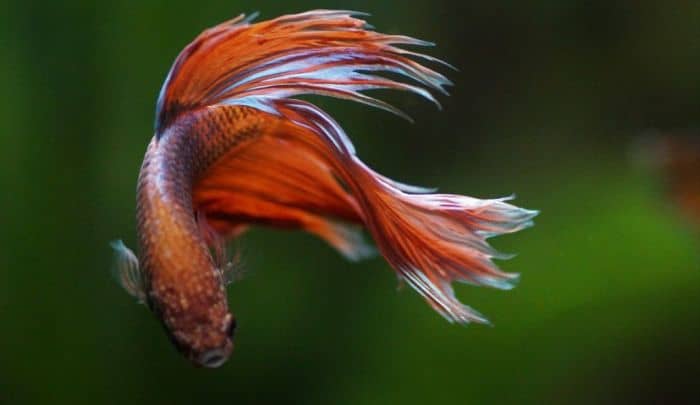
Betta Fish are popular first pets for new fish owners. People gravitate towards these fish because of their beautiful colors and energetic disposition. Bettas are small and relatively easy to take care of.
These freshwater fish prefer warmer climates, so you’ll need to get a heater for these fish. Also, keep in mind that they are picky eaters. Pellets and small critters work as perfect meal for them.
Give your Betta the attention and care it needs. Your fish will live for years. Just keep Bettas separate, especially male Bettas. They could end up fighting one another.
2. Neon Tetra Fish
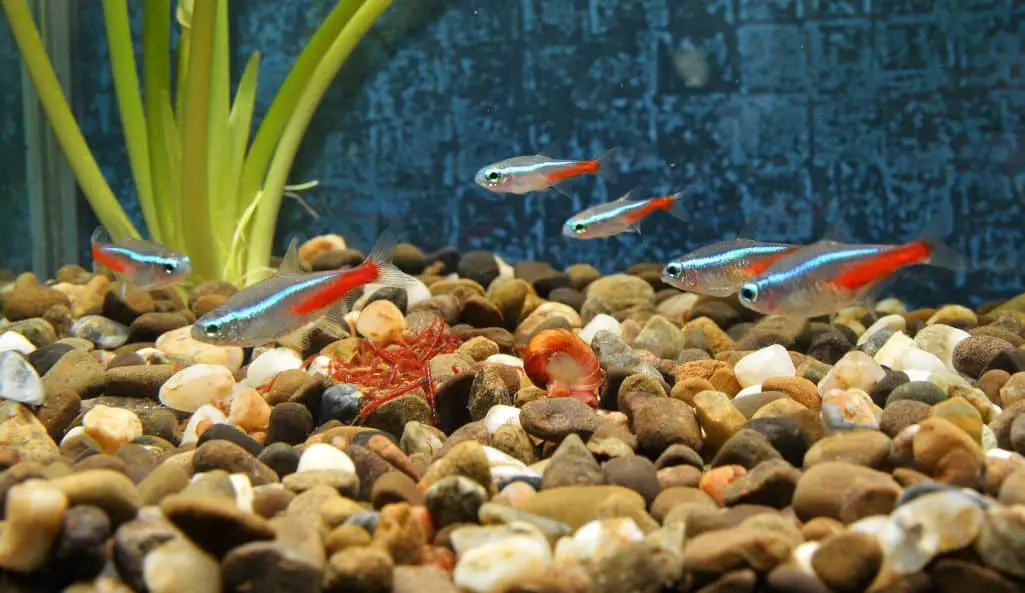
The next fish we recommend for freshwater aquariums are Neon Tetras. These are great pet fish for beginners.
The Neon Tetra has a unique look and color. They can be seen in the dark. This is due to their iridescent scales. These fish live the best in groups. You can get a small group of these fish for a decent price.
Neon Tetras are also warm climate fish. They aren’t as fussy as Bettas and can eat any food. But they do like live bugs and other small sea creatures like shrimp. Tetras are peaceful and easy to care for fish.
3. Guppie Fish
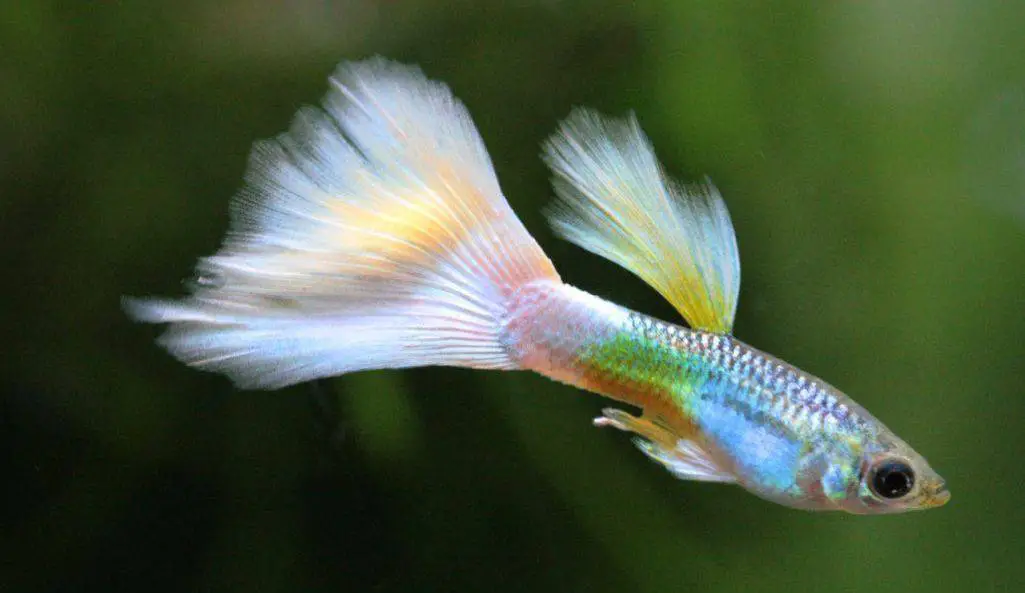
Guppies are another great freshwater fish. The good thing about this species is that they are adaptable.
Guppies can be put in almost any water condition. Best of all, your fish can survive in water from fifty degrees Fahrenheit to eighty degrees Fahrenheit. When it comes to food, Guppies like a mix of plants and meat. You can find this in flakes or pellets, or you can make your own mix of pet food. Guppies are hardy and won’t die on you easily. They are easy to keep in a tank. If you want more color, get a male, Guppy.
4. Oscar Fish
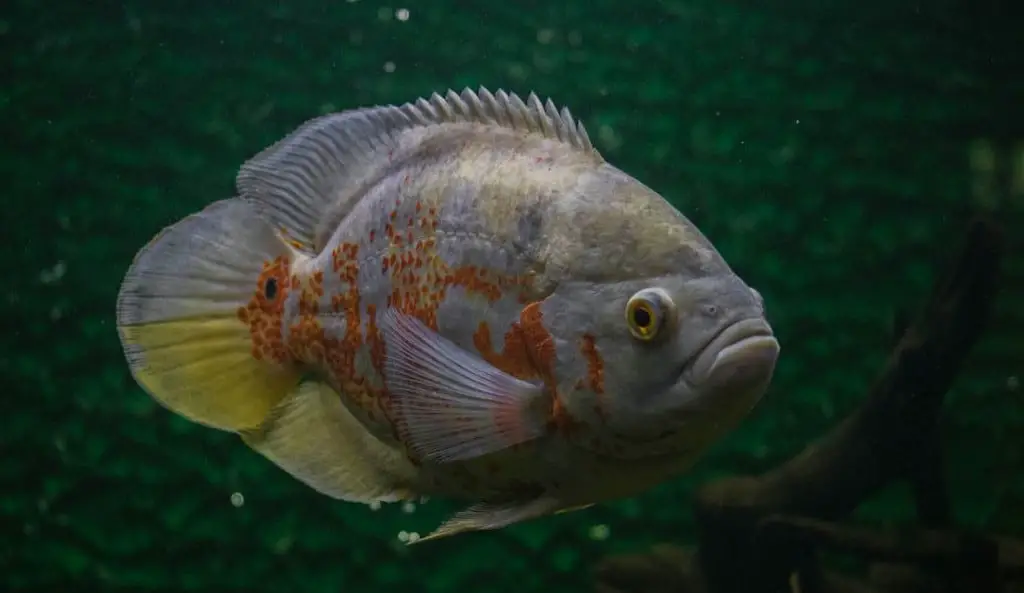
Oscars are another freshwater fish you might want to consider putting in your tank.
Oscars differ from other fish. These are clever pets that can be taught to do tricks. Not many fish can be trained like Oscars. While these fish are smart, they don’t do well with other fish.
These fish should be kept alone or with other Oscars. They grow big rapidly and because of this produce large quantities of waste. So you’ll be cleaning up after your fish a lot. If you are willing to put up with this, these are great fish to have. You can hand-feed your fish and really create a bond with them.
5. Goldfish
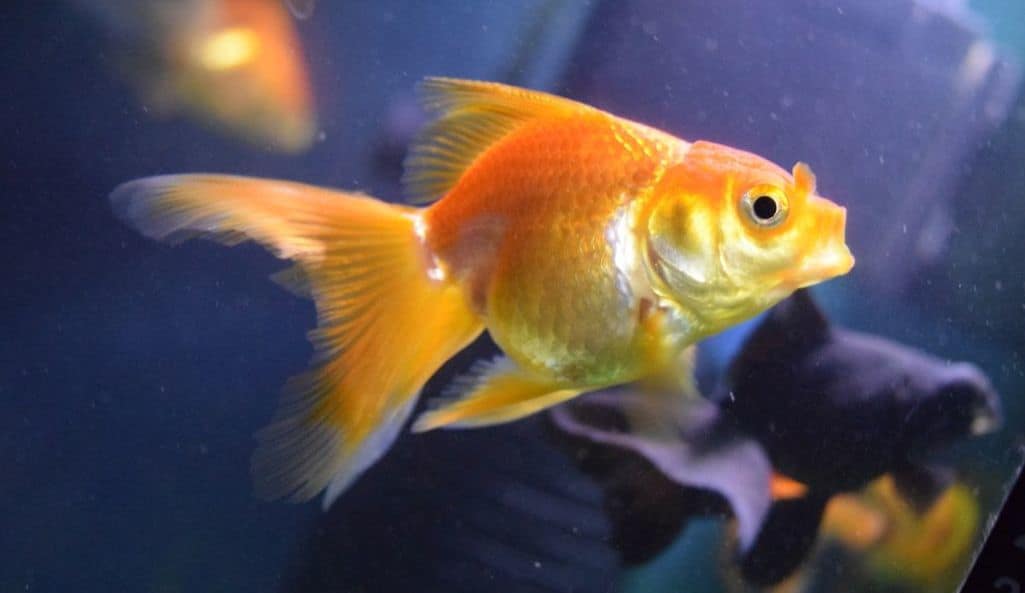
Goldfish are an obvious choice for a freshwater aquarium. They are some of the first fish people think of when they buy tanks.
Goldfish come in all sorts of fun colors and varieties. They will also survive in all sorts of water conditions. This makes Goldfish perfect for beginners.
Goldfish are the most kept fish in the world. In a properly sized aquarium, they will live a happy life and grow larger. You can put your fish in with other goldfish or other fish.
6. Rainbow Fish
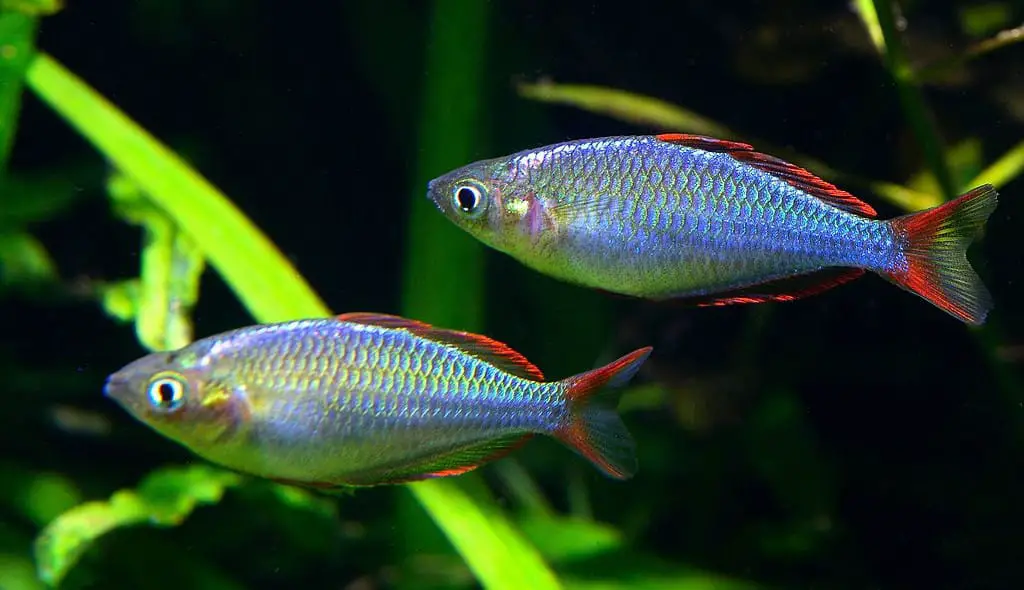
Rainbow Fish don’t live up to their colorful name in their youth. But as they mature these fish develope into multicolored beauties.
If you are looking for color get a male Rainbow Fish. Male fish tend to have more interesting colors than females. But both fish develop richer colors as they age. These fish like warm waters, and like lower Ph in a tank.
Rainbow Fish can be kept together, but males should be separated due to possible aggressive behavior. Rainbow can eat all kinds of fish food. Just feed them regularly and they will stay healthy.
7. Discus Fish
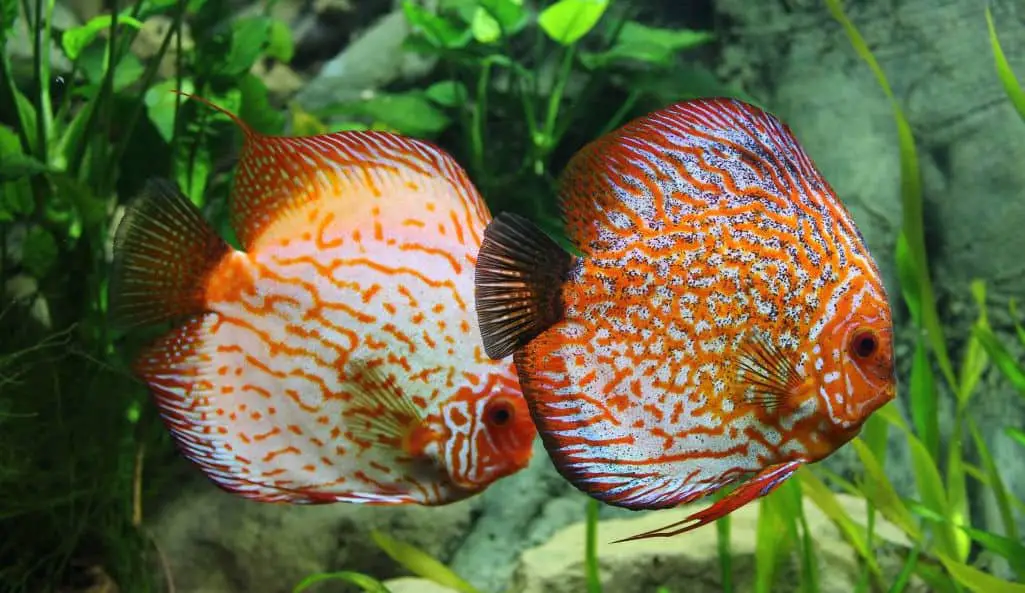
Discus are cool fun-shaped fish. As their title suggests, these aquatic pets come in a disk-like shape. They can be bought in a lot of different colors, and they are pretty huge. So if you do get a discus, you will want to have a large tank for these fish. We don’t recommend Discus for new fish owners. This is because maintenance can be a little tough for these pets. They need very specific water conditions.
However, if you do have aquarium experience these can be great fish to keep in a tank. Discus are carnivorous so they need to be fed worms and other meaty foods. Flakes and pellets can act as a supplement to these heartier foods.
8. Angelfish
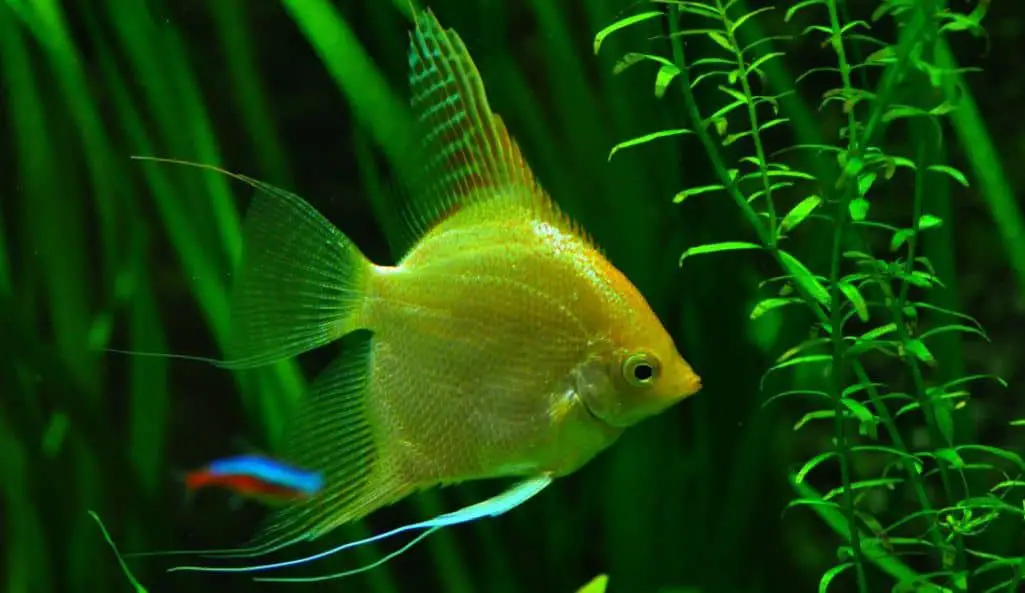
Angelfish are a part of the same family of fish as Discus but have some key differences. These fish are tall and have delicate wispy fins.
You can find Angelfish in almost any color. They like meat-based food but also need plants in their diet. Get a large tank for these fish and keep the water a little acidic.
Don’t keep your Angelfish in a crowded tank, they like plenty of room to swim. You can put other fish in with your Angelfish just be mindful of the space in your tank.
9. Killifish
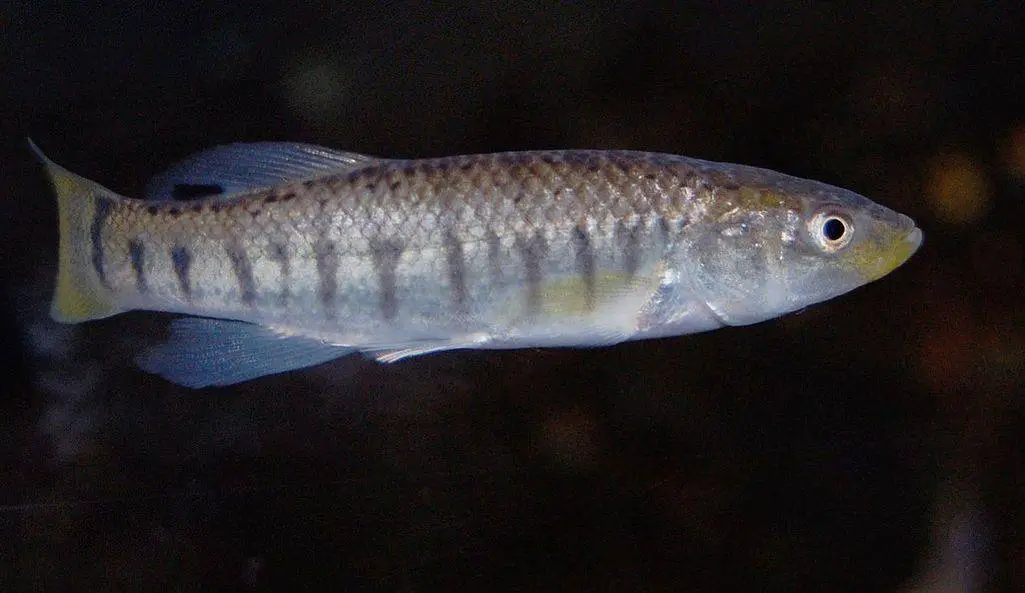
Killifish boasts the greatest variety of fish on this list. There are over seven hundred different breeds of the Killifish.
With this kind of variety, a killifish can fit any type of aquarium. This is great for people who want to put multiple types of fish in a tank. Your fish will get along with any of your pets.
They are bright, striking, and breed with ease. But don’t keep them with other male Killifish. Like some of the other fish, they can get aggressive around males of their own species. Killifish like to eat worms and other critters so don’t just buy flakes for your fish.
10. Platy Fish
The last fish on this list are Platys. This is another popular freshwater fish, that you don’t want to overlook.
If you are into colorful fish, this is the pet for you. Any color you can think of, you can find Platies that have what you are looking for.
Put these fish in with any aquatic pet you want. These are energetic and fun fish that love to swim in groups. They mostly eat plants but should snack on protein as well.
Starting a Planted Tank in a Freshwater Aquarium
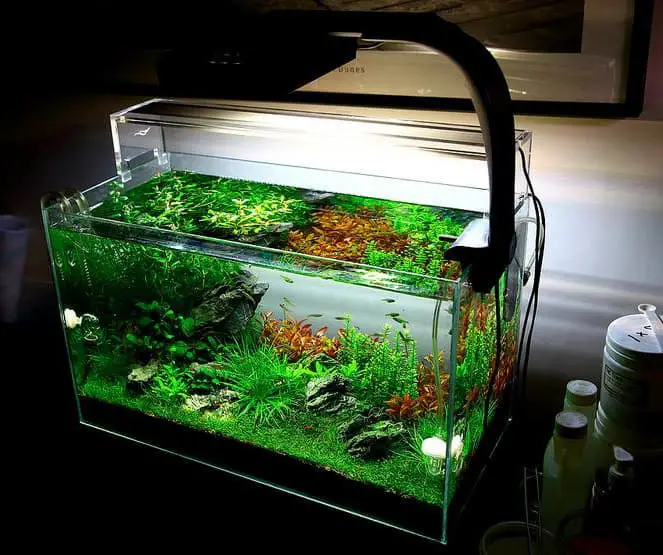
If you want a complete tank experience, you should put plants into your freshwater aquarium. They may cost aquarium owners a bit of extra money, but they are worth the price and upkeep.
Plants are full of benefits for aquatic life and tank owners. The biggest benefit of aquatic flora is healthy water conditions. Tanks will stay cleaner and have less waste built up in them over time with the addition of plants.
This is because tank plants are able to absorb the ammonia emitted by your fish. In addition, plants are also able to create better oxygen flow in a tank. This is great for your fish because they will be able to breathe better and be more active.
You really can’t go wrong with planted tanks!
They look great and keep your fish in a nice natural environment. Still, there are a few things you should know about planted tanks before you decide to purchase any greenery.
Plenty of Plants to Choose from
Planted tanks will create an ideal home for your fish, but they take work. Know that your planted tank does not come without effort.
It isn’t impossible to upkeep your plants, but you have to do some research. Each plant has different needs and these will depend on their original natural environments.
Some plants come from freshwater origins others from saltwater habitats. Freshwater plants are usually easier to keep in your tank. Saltwater plants have more stringent requirements. So we only recommend them for veteran aquarium owners.
There are plenty of plants to choose from. All kinds of sizes and styles are available. Just make sure that your plant is suited for your tank size and that it is appropriate for your skill level. Some plants can be tricker than others so you want to keep that in mind.
The Equipment
Whichever plant you end up choosing, the first thing you will need to get is a lighting system. Plants of any type will not survive long without light. How much light a plant needs depends on the plant. But getting an adjustable LED will save you a lot of trouble. This system will help you adjust the light to the right light intensity.
Some plants light high-intensity light while others will prefer lower levels of light. Once you figure out the lighting of your tank, you’ll need to get gravel and fertilizer. This isn’t true for every plant. But most greenery needs extra materials to help it root and stay properly fed. These items will aid your plant in their growth.
If you want, you can also get larger rocks, driftwood, and other items. These can also help root your plant down so they stay fixed in your tank.
Water Conditions
The last step in settling your plant is water conditions. Like fish, plants have specific requirements that allow them to thrive in the water. Plants are sensitive to temperature, Ph, and the cleanliness of your water. Make sure to research your plant’s needs thoroughly and prepare the water before you put your plants in. This way your planted tank will last for a long time.
Once you have established your plants and your fish, you just need to upkeep the conditions of your tank. Make sure to clean the water out regularly to keep plants from decaying. Cut the leaves and stems of your plant and get rid of any debris. This way your water won’t be filled with decaying plant material.
Overall, plants can be useful for freshwater tanks. They come with more positives aspects than negative ones.
Simple watch over your plants, keep them at the right conditions and trim them at regular intervals. Follow these steps and you will have a flourishing planted tank!
Saltwater Aquariums
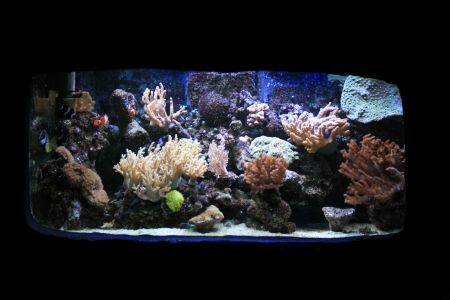
If you want a piece of the ocean in your home, saltwater aquariums are a great investment.
These types of aquariums are filled with saltwater from the ocean. In combination with coral reefs and other ocean life, the environment of the sea is recreated in a smaller space.
Saltwater tanks boast bright and vibrant hues and draw viewers in. In particular, sea fauna is full of variety that will make for a unique tank look. Corals and other reefs are especially good at creating a stunning visual in your home.
In comparison, freshwater tanks will have more earthy tones with some color. Freshwater aquariums are great for beginner aquarists. But saltwater aquariums offer an entirely different experience to those who are familiar with tanks.
Plants aren’t solely responsible for this result though. Fish from saltwater habitats are some of the most visually striking in the world. Freshwater fish are colorful, but not to the same degree as ocean fish.
The ocean is home to untold species of aquatic life. In fact, most of the ocean is still unknown to us. New fish are being discovered each year. In other words, the ocean has not been fully tapped. For these reasons, saltwater aquariums are highly sought after.
Saltwater aquariums are beautiful and will add a great aesthetic to your home. But like freshwater aquariums, you will need to consider the requirements and trade-offs for this type of tank.
A Different Level of Maintenance
For one, saltwater aquariums require a different level of maintenance than freshwater tanks. Often times it can be harder to take care of these tanks in comparison to freshwater aquariums. This should be thought about before you purchase a saltwater aquarium. Because saltwater fish and plants can be trickier to maintain than freshwater life. Not all pet owners are meant for these aquariums.
Aquatic organisms from the ocean need different lighting and require fixed water conditions. You don’t want to deviate from these conditions or your tank plants and pets can die. Saltwater aquariums can be maintained but will have to be carefully monitored. This way your fish can enjoy an ideal environment in your saltwater aquarium.
The Cost of Saltwater Fish Tanks
The cost of these aquariums is another factor in your decision. It’s not to say that you shouldn’t get these tanks. But you might spend more on a saltwater tank than freshwater ones. The material has to be made more durable, so it can withstand the salt in the water. Saltwater aquariums also have to be bought in bigger sizes.
You can’t put fish from the ocean in small tanks. So you will likely be spending more money on a large aquarium. The good thing about this is that saltwater aquariums can be more easily bought at larger sizes.
If you want to purchase a massive saltwater aquarium you won’t have trouble getting a tank in this size. Like freshwater tanks, you can purchase them in glass or acrylic.
Personally, we recommend going with glass for saltwater tanks. Tanks made out of this material will last you a long time. They also hold up better surrounded by saltwater.
Fishkeeping can get expensive. Even freshwater tanks stack up in costs. But with freshwater tanks, you can find cheap options if you want a low maintenance tank environment. With saltwater tanks, this is not the case. You can’t get your fish a small cheap tank or your pet and plants could die.
With saltwater aquariums, you need to go with larger tanks at the start. You also need supplies that will keep your tank in good condition.
In addition to a big tank, you should spend good money on a high-quality filtration system. Saltwater needs to be filtered thoroughly to keep it from going bad, this is important for your fish.
The Cost of Saltwater Fish
And speaking of fish, you might spend more money on saltwater fish. Many saltwater fish have a higher pricepoint than freshwater fish. Still, some fish can be bought cheaply. Some pets can even be purchased for as low as six dollars. The price will be dependent on the fish.
Not all saltwater fish are costly. But some rarer and more colorful species will add up. For instance, a couple of clownfish could cost you around forty dollars. Other exotic fish can be priced at one hundred dollars. The most rare fish can even add up to a thousand dollars.
Pick out a fish that fits with the look you want and the price range that is right for you. If you want, you can save money by buying used saltwater aquariums and lighting systems. As long as they are functional and clean your fish will have no problems!
Overall, saltwater tanks are great fixtures to have in your home. They can get expensive, but this shouldn’t scare you away. If you know what fish you want, and how much you are willing to spend, they can be worth the cost.
Saltwater aquariums are a unique pet habitat. If you choose to use one, it will definitely provide you with something you can’t get out of a regular freshwater tank.
Popular Saltwater Fish
In the next section, we’ll go over some of the most popular fish for saltwater aquariums. The fifteen fish in this list look great in tanks and will thrive in your water for many years.
We will provide you with some information and care tips. This way you can keep these beautiful fish healthy and strong. With the right amount of care, you will have an amazing aquarium with eye-popping pets! These fish are best for people new to saltwater tanks. But they will suit any tank owner’s needs!
1. Mollies
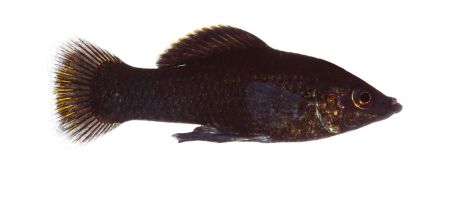
Mollies are recommended for freshwater fish tanks. But some species of these fish can also adapt to your saltwater tank as well! These fish will love to swim in an ocean-like environment.
When you pick a Molly, the best version to put in a saltwater tank is black colored mollies. These are smart and dynamic fish. The best thing about Mollies is that they can get used to ocean water in a matter of hours. Feed them flakes and some protein to keep them healthy!
2. Clownfish
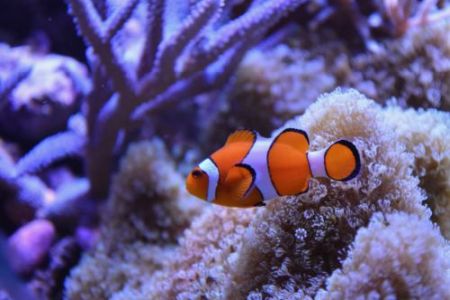
The next fish on our list is the popular Clownfish. These fish are well known and were even featured in a successful Disney animated film.
Clownfish are colorful and aren’t as hard to care for as other saltwater fish. These fish can eat many types of food, but pellets are a simple option that will keep them swimming.
Clownfish are energetic and like to be around other fish. If you have different fish in your tank, a clownfish will be a welcomed addition. Put your fish in warmer water. Around seventy and eighty degrees will work for the clownfish.
3. Royal Gramma Basslet
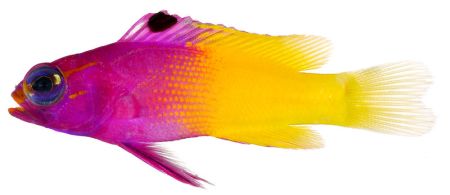
Royal Gramma Basslet are brightly colored fish with purple and yellow hues. These are small fish that only like to be with other Basslet. So don’t add them in with other fish. Though a Gramma Basslet is not large, they will need at least thirty gallons of water to live in. Buy these fish a large tank with rocks and plenty of cover. Basslets like to eat protein-rich foods. Pellets will not be enough for them. Frozen shrimp, live shrimp, and other small critters will keep your fish well fed. Keep this purple and yellow fish in around seventy-two to seventy-eight-degree waters.
4. Green Chromis
You won’t have a hard time taking care of the Green Chromis. These fish are relaxed and like to be around a school of other fish. Rocks should be put in a tank with these fish. This way they have places to rest and hide.
The luminescent scales of the Chromis really make this fish stand out in a tank. At night they will give off a pleasing glow with the right lights. Your water should be heated to around seventy-nine to eighty-two degrees Fahrenheit.
The good thing about Chromis is that they can be bought cheap at around six dollars per fish. Just make sure they have a big enough tank. Thirty gallons is recommended for this fish.
5. Butterfly Fish
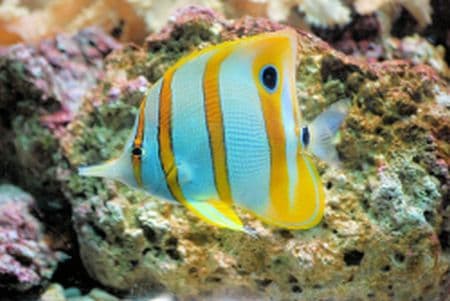
The Butterfly Fish are striped fish with a lovely shape. These tropical fish are one of the most beautiful on this list. If you are looking to purchase a pet with variety and great aesthetics this is the fish for you.
Butterfly Fish come in all sorts of vibrant colors. They live near coral reefs and have many interesting markings on their bodies. If you get this fish, make sure it has plenty of swimming space and warm water. Anywhere from seventy-two degrees to seventy-eight degrees will do.
Butterfly Fish are not demanding pets, just give them enough food and basic care. They like to eat flakes and several types of frozen foods.
6. Wrasses
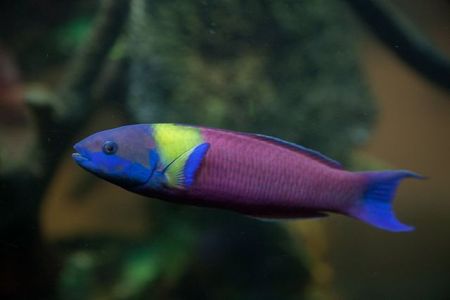
Wrasses are bottom-dwelling fish, with a shy personality. If you plan to get this aquatic pet, make sure you have sand put on the floor of your tank.
Wrasses like to burrow in this type of substrate and hide. Rocks and other structures should also be put in your tank.
Wrasses can be with other fish, but they aren’t likely to swim with your other pets. They like their alone time. These are colorful fish, but beware, they make a mess with all their digging. Put these fish in warm tropical climates. Also, you won’t want to put snails or other aquatic pets and fish in the tank. Wrasses will eat up your other nonfish pets. Keep this in mind as you set up your tank. Prices for Warasses vary, but they are usually around forty dollars per fish.
7. Talbot’s Damsel
The next fish on the list is the Talbot Damsel. Damsels are peaceful fish that require minimal amounts of care. When you are creating your aquatic environment, you’ll want to keep aggressive fish away from your Damsel. They could get attacked or eaten.
Like the other fish on the list, Damsel’s will enjoy the coverage of rocks and other structures. Make sure to provide this for your fish so they’ll feel safe. Sand should be used for the bottom of your tank too. This is a soft substrate that is well suited for your pet.
When it comes to food, this fish likes food with a lot of protein. Flakes and pellets won’t be enough. Give your fish a good hearty meal. And keep the waters warm at around seventy-two to seventy-eight degrees. A tank thirty gallons or more will suit the Damsel.
8. Coral Beauties
Coral Beauties are a type of angelfish. These fish are smaller than other angelfish and are generally cheaper than most saltwater fish. They live long and are a hardy breed. With their rich blue color on their edges and bright colors in the middle of their bodies, your tank will look great. These are calm fish. But if they are put in smaller tanks they can get a little aggressive with other fish. If you have a large tank this won’t be a problem for you though. What might cause some issues is feeding.
Coral Beauties are picky eaters, so you’ll have to try out a few different foods. Try flakes and frozen food at first. If that doesn’t work you can try live food. Give your fish plenty of rocks for coverage. The rocks will help them hide but also aid them in eating. Algae can grow on rocks and your fish will eat them. Despite their name, Beauties don’t like to live in coral. So consider this if you have a reef in your tank.
9. Firefish
The Firefish are fun fish with an energetic personality. They are shaped a little differently than typical fish. Their short bodies look almost sword-like. Their bright colors only add to great aquatic visual.
These are friendly fish and will do well with almost any other fish species. They are very popular among saltwater fish owners. Give this fish a try if you want a spunky fish that will fit into a reef environment.
Firefish like waters around seventy-two to seventy-eight degrees. And, they should be put in twenty-gallon tanks or larger. They enjoy live foods the best! Creatures like shrimp or zooplankton are good for their health. Some flakes can also be added into the mix.
10. Dottyback
Dottybacks are bi-colored saltwater fish. They come in many colors, but the most popular are combination is purple and yellow.
The Dottyback have simple needs, but can be a bit aggressive. So make sure to get a big tank to keep them calm. Warm waters are best for this fish. And you should feed them with meats, not flakes or pellets. Live food can be given to the Dottyback, but frozen food works as well. These are great fish to add to your tank.
11. Damselfish
The Damselfish is another brightly colored aquatic pet. You can purchase these fish for a reasonable price. And they are bred in multiple styles and colors. Get your fish a thirty-gallon tank at a minimum. And put them in waters between seventy-three and eighty-three degrees.
Damselfish are good with their own kind, but should not be mixed up with other types of fish. This is because they can be a little territorial and aggressive. If you get a small tank these traits become worse. So get your fish the right tank, and make sure to feed them regularly.
Damsels like to eat any food you give them. This makes them uncomplicated pets. Overall, these small fish are fierce and well priced.
12. Chalk Bass
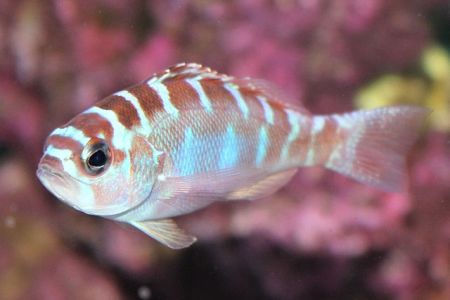
If you are looking for a pet that is great for beginners, the Chalk Bass is a great choice. This Bass is a tropical fish that will survive in many conditions. Even if you don’t have the water just right your fish can live. This is because the Chalk Bass are extra hardy and can fend off illness better than other fish. With a pet like this, beginners can make a few mistakes and still keep their fish alive.
Chalk bass are not only durable but also look nice in your tank. Their white and red coloring bring a spot of color to a tank. Chalk Bass can live with other species of fish. Just make sure they are introduced to other fish sooner rather than later. Otherwise, they might have territorial fights with other fish.
13. Watchman Goby
Some people think the Watchman Goby has a strange look. But aside from their alien looks, they make good pets for new fish owners.
The Goby doesn’t require much maintenance. They eat all kinds of food and get along with almost any type of fish. They are also easy to acquire and pretty cheap.
The most popular Gobies come in a yellow color. Try this fish out if you are new to saltwater aquariums! Gobbies like big tanks with plenty of coral. So if you want to plant aquarium coral this is a good fish to go with.
14. Tangs
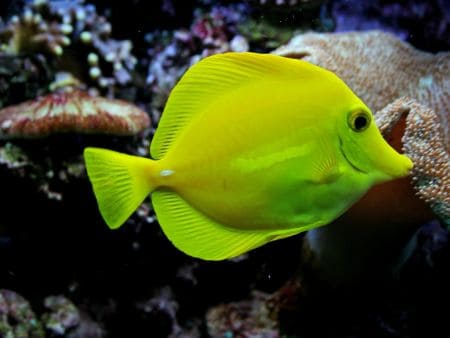
Tangs can get a little pricy, but these fish are worth the money you will pay. These are beautiful fish that have lovely shades of color. Yellow looks great on the Tang, but blue is also a popular color with this fish.
They are usually pretty peaceful with other species. But Tangs are not fond of their own kind so only get one of these. And try putting them with other kinds of fish. A Tang will need at least a hundred gallons of water. Some people might not want to get a tank this big, so keep this in mind.
15. Longnose Hawkfish
The last fish on our list of top saltwater fish is the Longnose Hawkfish. This thin fish is active and a joy to have in any tank. They will swim around and interact with you and other fish well. But be careful which fish you put in with the Longnose. They can get a little aggressive with certain types of fish.
This is a tropical fish that does the best in climates around seventy-two degrees to seventy-eight degrees. Feed you Longnose a mixture of flakes and meats to keep them in peak condition.
Aquarium Corals
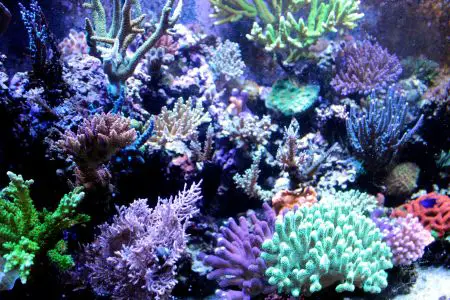
Aquarium corals are fun and dynamic additions to saltwater tanks. They can’t be found in freshwater tanks but are perfect for saltwater aquariums in the right conditions.
Purchasing and installing your aquarium coral can be a thrilling experience. But you don’t want to go into this process blind. Coral reefs require a lot of specialized care. So you need to read up on any coral you purchase and plan on putting into your tank.
Your coral is not a plant, it is a living creature. In the wild, it can fend for itself. In a tank, coral relies on you to give it the care it needs to survive in an artificial environment. If you don’t give a coral what it needs, it will die.
To make sure you can give your coral the best care, we have compiled some simple tips. This way your aquarium will thrive with coral in it.
Beginners may find taking care of coral difficult. But if you are committed to looking after your coral you can successfully keep them in your tank
Stability
The most basic and important care tip for these creatures is to keep your tank in stable condition. In simple terms, this means is that you want the water composition in your tank to stay constant.
You don’t want the temperature to fluctuate widely. Ph levels, salinity, and other water conditions should always remain the same. If these conditions change often, your coral will not live long. The same can be said for your fish. In general, saltwater organisms like to be in the same environment. When you don’t stick with this the consequences are dire.
Our best advice is to mimic the habitat your coral came from as close as you can. Read up on these conditions and follow them to a tee. This way your coral will stay healthy and live for a long time. You will know if you are successful through several indicators. Their color of the coral will look bright. The growth will extend well. Lastly, you should no see signs of decay or rot.
Maintaining Salinity
Realize that ocean water has a very specific chemical composition. You need to keep that composition intact. The first way you can do this is by maintaining salinity. This is the salt content of your tank. Coral and saltwater fish can not survive without this.
You want the water to be between one point zero two four and one point zero two seven. Any other number will not bode well for coral. To keep this salinity, you want to buy a good salt mix to combine with freshwater. You can buy a mix that is tailored to coral reefs.
Next, you’ll need to mix the product in well and let it sit overnight outside your tank. When the mixture is ready, slowly introduce it to your tank. Take out a little bit of your tank water out and carefully add in the new water.
To keep the level of salt right, make sure to change the water often. And check the salinity regularly. If there is too much salt, you can put in a little bit of fresh water to dilute your tank water.
The Calcium Level
Three other components of ocean water should also be considered for your coral reef. This includes calcium level, the alkalinity of your tank, and the magnesium present in the water. All of these elements need to be perfect to balance the water in your saltwater aquarium. This way your coral will have the best habitat to live and survive in.
With calcium, the reading should be at four-hundred parts per million to four-hundred fifty parts per million. This is important because calcium helps your coral grow itself. When the measurements are off, your coral won’t be able to grow to its full potential.
Keeping calcium balanced in a tank is relatively simple. You can buy calcium solutions at your pet store. Keep the levels stable and don’t let it slip more than twenty parts per million off your normal reading.
Magnesium and Alkaline Levels
Magnesium levels are another thing you need to look out for in your coral’s water. This substance keeps your coral’s tissue healthy and fused together. You’ll want a reading of one-thousand two-hundred and fifty to one-thousand three-hundred and fifty. You can maintain this by getting magnesium solutions from a pet store. You can also add in calcium reactors for better results.
The last thing you need to check is the alkaline level in your tank. Alkaline is harder to control in comparison to other substances in your tank. It needs to be measured out against calcium and magnesium. When you adjust any one of these substances, you have to adjust the alkaline level as well.
Overall, alkaline balancing is not as easy to explain. Essentially though, when you have calcium and magnesium balanced out you control the alkaline level. Get a kit to get the right measurement. It needs to read between seven and twelve. A higher Alkaline level can be useful for your tank so keep that in mind as you make these changes in the water.
On the whole, if you keep your aquarium water stable and give your coral the right conditions, you shouldn’t have a problem. Coral requires patience and work to keep them flourishing in saltwater tanks. But once you get around to understanding their needs, they are a perfect way to bring natural authenticity to a tank.
Aquatic Turtles
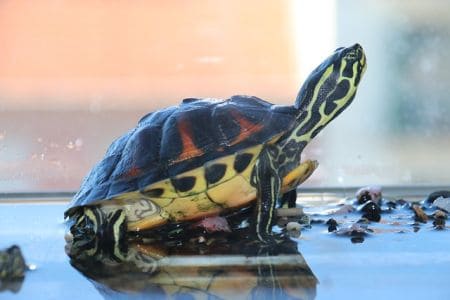
In the last portion of this information guide, we will be talking about aquatic turtles. This is a different kind of aquatic animal you can house in an aquarium.
Aquatic turtles are fairly popular tank pets. They live long lives and grow quite large. In fact, aquatic turtles can reach up to a foot long in an aquarium. So, like fish, they will need large tanks when they are taken home with you. People who like fish may want to purchase these pets. While these types of turtles share some similarities to fish in terms of care.
Overall, they have their own set of requirements. In this section, we’ll go over the basics of these fun pets.
Turtles don’t ask a lot out of their owners. You can give your pet very basic care and see them live for a reasonably long time. Still, they need to be put in the right tank conditions and be fed regularly.
Aquatic turtles should also be given attention. Interact with your turtle regularly to keep them happy. Other basic needs include a big enough tank, good lighting, a clean area to live in, and a filtration system. If you have all these components it shouldn’t be hard to keep your turtle healthy.
Just keep in mind that there are many parts in a tank to set up and maintenance. Also, tank water needs to be cleaned regularly as it can get very dirty. And turtles require special lighting systems which we will get into in the next section.
Turtle Food
When you feed a turtle, try not to buy turtle food. This food can keep your turtle alive, but it is not ideal for their health. The best way to feed your turtle is with live food.
You can also give them fresh fruits and vegetables as well. Turtles enjoy eating apples and lettuce. If you want to give them meat try putting shrimp in your tank.
During feeding time you can place the food at the top of the water. Your pet will come up and get the food themselves. Make sure to clean up after your turtle. They can be a little messy during mealtime!
If turtle care sounds like something you can handle we recommend a few species of these aquatic pets. New turtle owners should buy red ear sliders. Alternatively, you can get a musk turtle.
Both of these species are sturdy and will adapt to many tank environments. This makes them a lot easier to take care of. If you want to try out other turtles that are more expensive or rare, be aware, they could be harder to take care of.
On the whole though, there a ton of great turtles to choose from. These are great pets for people who know how to take care of aquariums!
Aquatic Turtle Aquariums
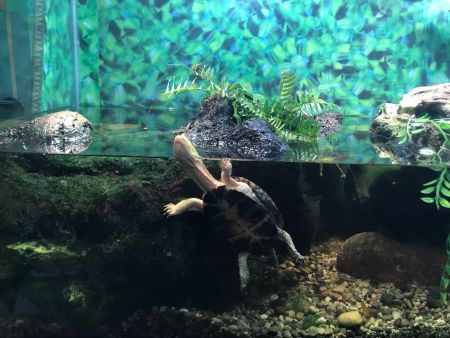
When you get an aquarium for your pet turtle go big. One turtle will need, at a minimum, forty gallons to swim in. And this doesn’t take into consideration how big your turtle can get.
If you get a species of turtle that is larger, you might need a bigger tank. So don’t get anything that is too small. In addition, you don’t want to fill the tank all the way up.
Turtles spend ample amounts of time in the water, but they also like to lay on the surface from time to time. This helps them get more heat from the lamps in their tanks. Put in rocks or wood to let you turtle rest on or bathe in the light.
Turtle Tank Equipment
In terms of lighting, you will need something high powered. Aquatic turtles will need anywhere from twelve to fourteen hours of light each day. And the light needs to mimic the sun.
A UV lamp must be purchased for any turtle aquarium. Anything else will not be good enough for your turtle. Pet stores sell specialized bulbs that will give your pet the light they need. Without these bulbs, your turtle could die.
In addition to lighting, also buy a filtration system and a heater for your tank. Turtle tanks can be filled with filth. Changing the water won’t be enough so a good filter needs to be installed.
A heater is also necessary. You want to keep your tank water at around seventy-one to eighty-six degrees Fahrenheit. A heating device will keep the temperature constant and correct for your pet.
These are just a few suggestions for the care of your aquatic turtle tank. Every turtle needs these basic needs met to live a good life in their tank. If you don’t keep your pet clean and give them the right conditions they could fall victim to health issues.
Turtles are known to carry parasites and salmonella. This is because they are often neglected and not properly cared for. If you watch over your pet these issues are less likely to occur. Conduct additional research to suit the specific turtle you end up buying. And keep your aquarium in top condition. These are great aquatic pets to have!
Conclusion
Aquariums of all shapes and sizes have permeated history. And throughout the years, these man-made habitats have changed dramatically.
They’ve transformed from holes dug in the ground to massive structures that house some of the world’s most beautiful creatures. This beauty is no longer limited to public places, or to the rich.
With the rise of aquatic technology, people all over the world are able to enjoy the wonders of aquatic life. In the comforts of their home no less.
We hope to have given you a taste of what these innovative structures can offer you. Aquariums are a must-have item for any fish owner. But they also require the proper care and knowledge so you can make the best choice.
With so many different types and makes of tanks, it can be hard to know what aquarium is ideal for your home.
With any luck, this article has given you a look into these items and all their variations. This way you can find the perfect home for your new pet!

